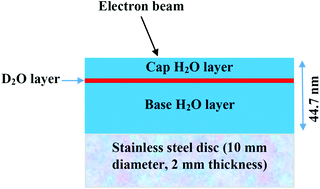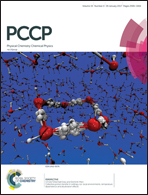Molecular hydrogen production from amorphous solid water during low energy electron irradiation
Abstract
This work investigates the production of molecular hydrogen isotopologues (H2, HD, and D2) during low energy electron irradiation of layered and isotopically labelled thin films of amorphous solid water (ASW) in ultrahigh vacuum. Experimentally, the production of these molecules with both irradiation time and incident electron energy in the range 400 to 500 eV is reported as a function of the depth of a buried D2O layer in an H2O film. H2 is produced consistently in all measurements, reflecting the H2O component of the film, though it does exhibit a modest reduction in intensity at the time corresponding to product escape from the buried D2O layer. In contrast, HD and D2 production exhibit peaks at times corresponding to product escape from the buried D2O layer in the composite film. These features broaden the deeper the HD or D2 is formed due to diffusion. A simple random-walk model is presented that can qualitatively explain the appearance profile of these peaks as a function of the incident electron penetration.



 Please wait while we load your content...
Please wait while we load your content...